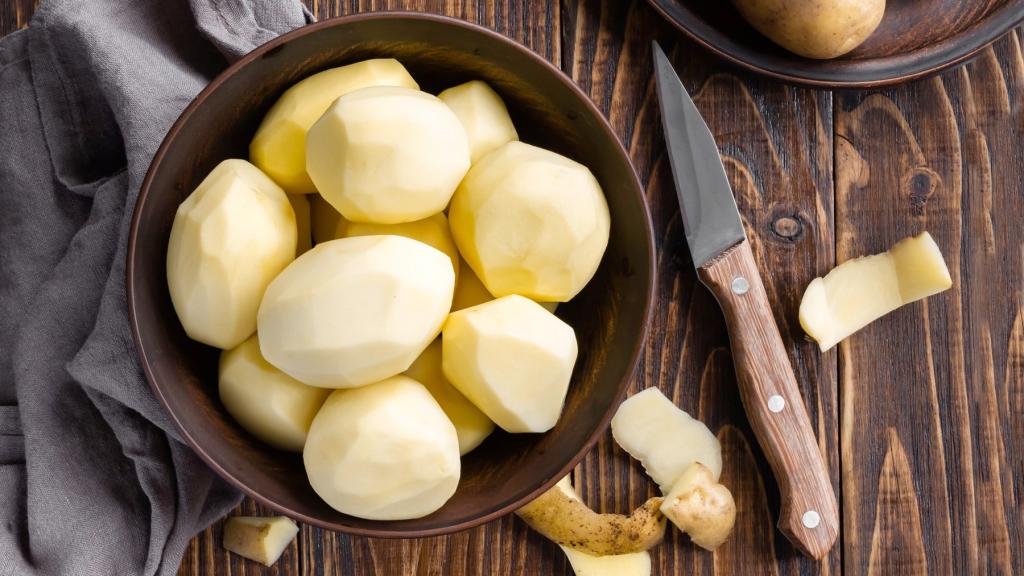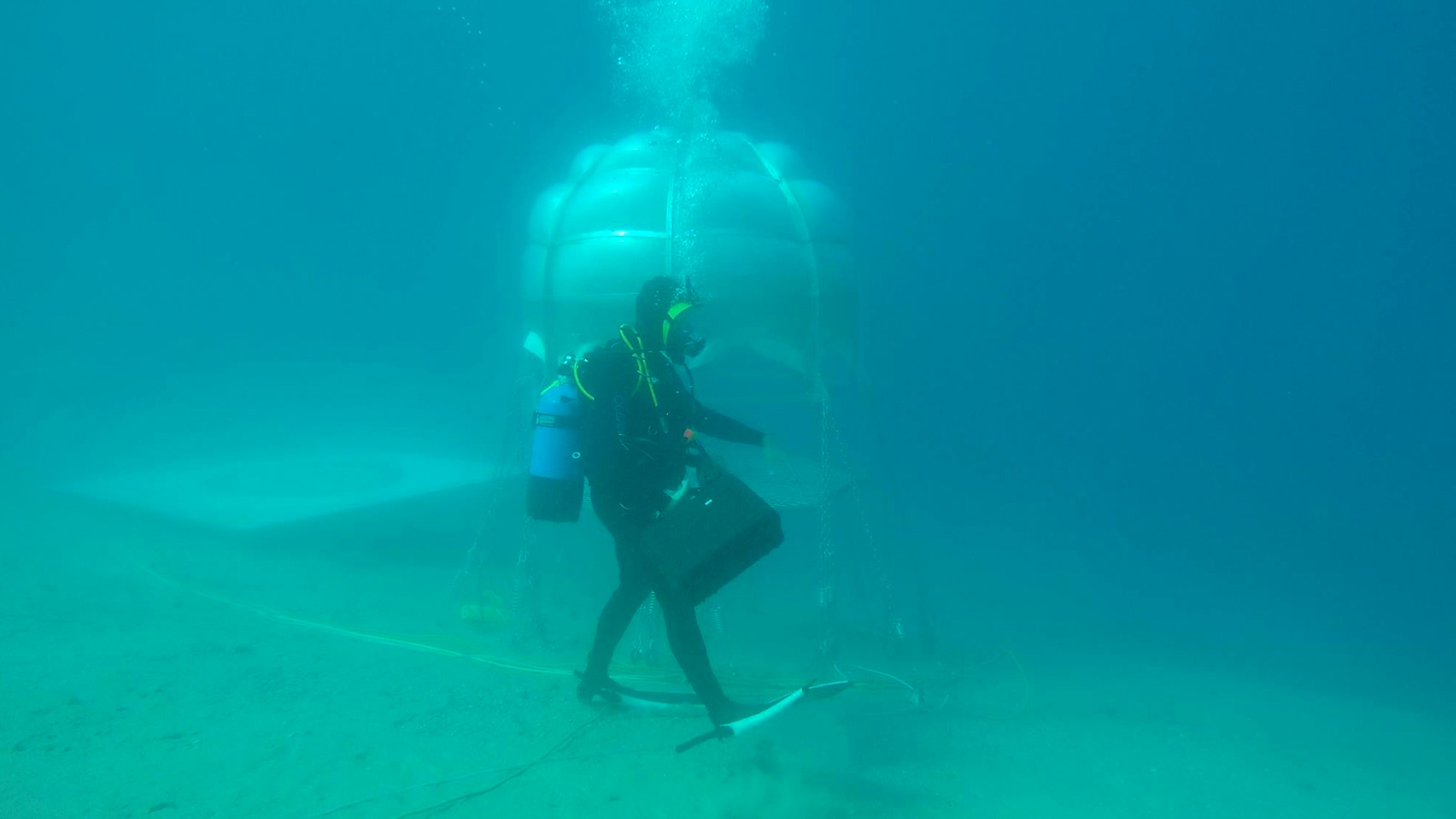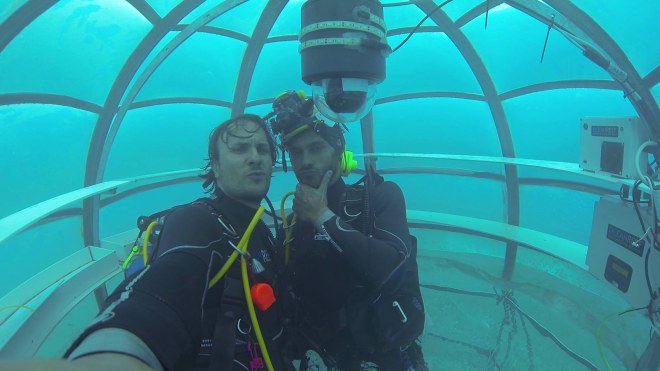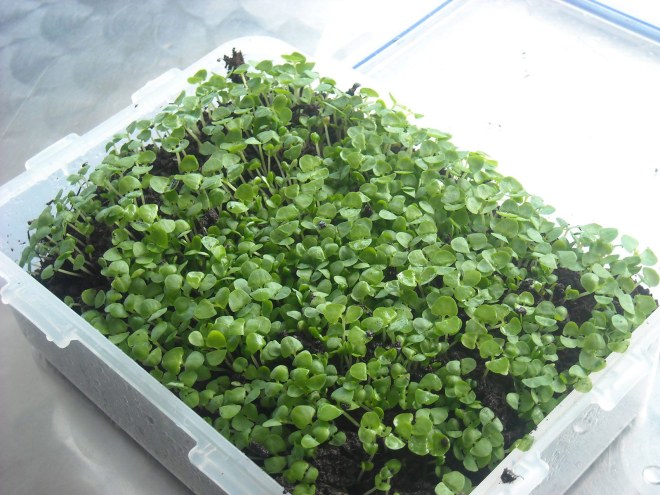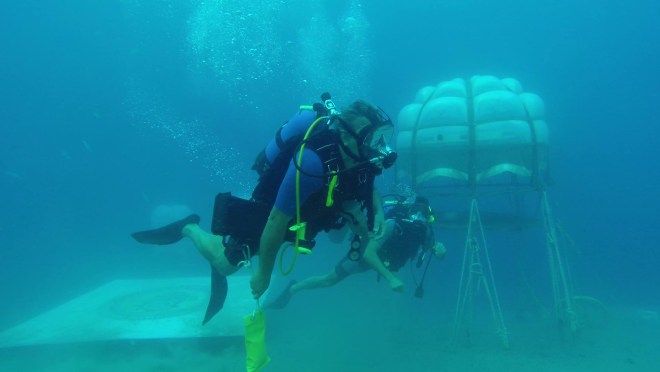What thrives at 79 degrees and 20 feet below sea level, and tastes like a strawberry?
Actually, it is a strawberry — a salty sea strawberry. OK, fine, it’s just a regular strawberry possessing no marine qualities that we know of, aside from being grown in a submersible greenhouse off the coast of Italy. This berry-infested Atlantis can be found alongside four other biospheres containing basil, lettuce, and beans. And while 20 feet isn’t quite 20,000 leagues, the improbable place is called Nemo’s Garden.
More from the Washington Post:
The balloon-like biospheres take advantage of the sea’s natural properties to grow plants. The underwater temperatures are constant, and the shape of the greenhouses allows for water to constantly evaporate and replenish the plants. What’s more, the high amounts of carbon dioxide act like steroids for the plants, making them grow at very rapid rates. …
Sergio Gamberini, president of Ocean Reef Group, came up with the “crazy” idea of growing plants under the sea while on a summer vacation in Italy. He immediately made a few calls and started experimenting, sinking the transparent biospheres under the ocean and filling them with air.
And, uh, why exactly?
“I try to do something that’s a little different and to show the beauty of the ocean,” Gamberini said. “I hope to do something for the young people and to inspire new dreams.”
Aside from that — and some pesto Gamberini made for a big dinner party — the submarine vegetables haven’t had much in the way of larger purpose. Or at least not yet! Gamberini and co. hope that the five greenhouses might serve as models for a more sustainable food system — one that can produce crops with minimal impact:
In fact, the biospheres are attracting wildlife. Octopuses seem to like taking shelter under the structures, and endangered seahorses have gathered beneath the biospheres to develop nurseries. Crabs have also been known to crawl up the anchors and into the greenhouses.
Just stay away from my salty strawberries, crabs, and we’ve got ourselves a deal.
A beautiful, whimsical deal. See?
